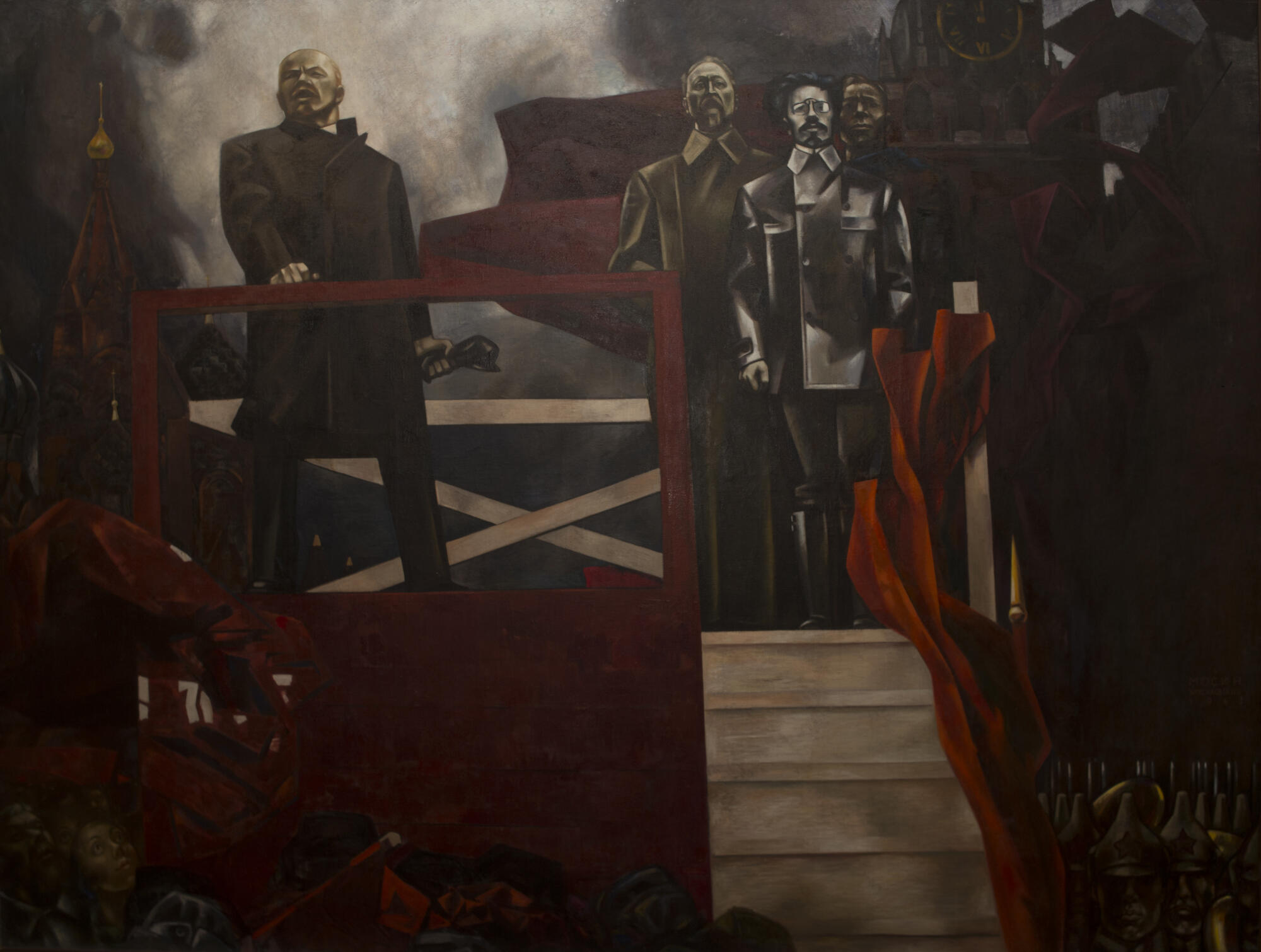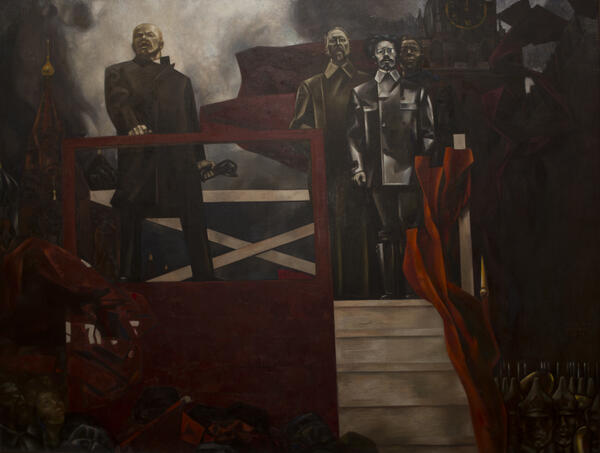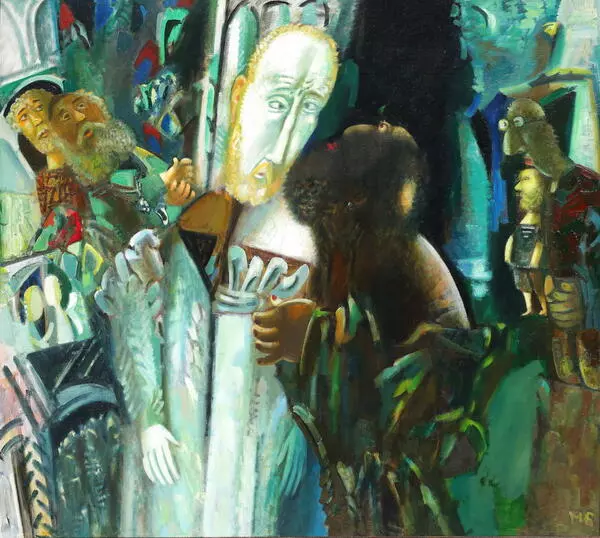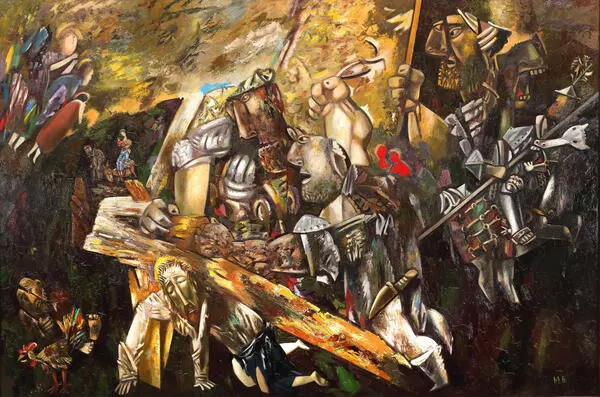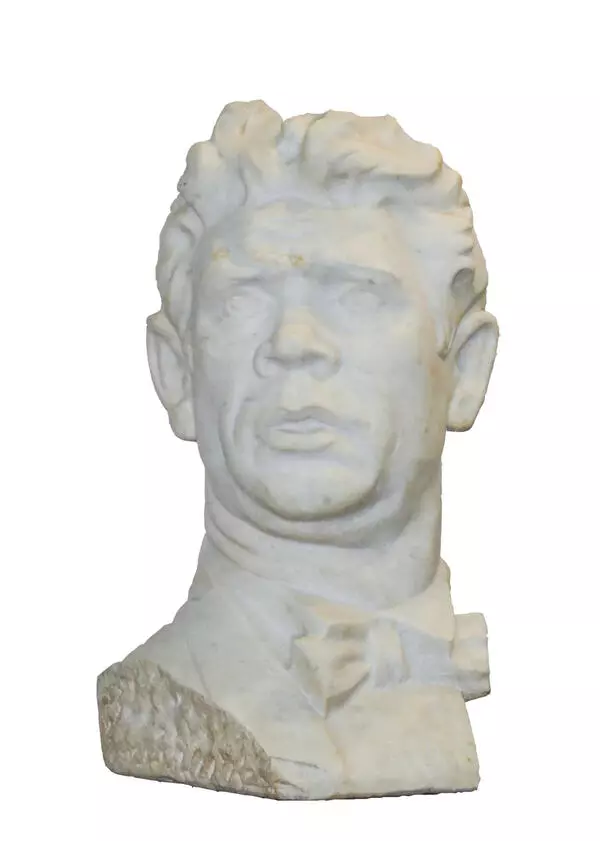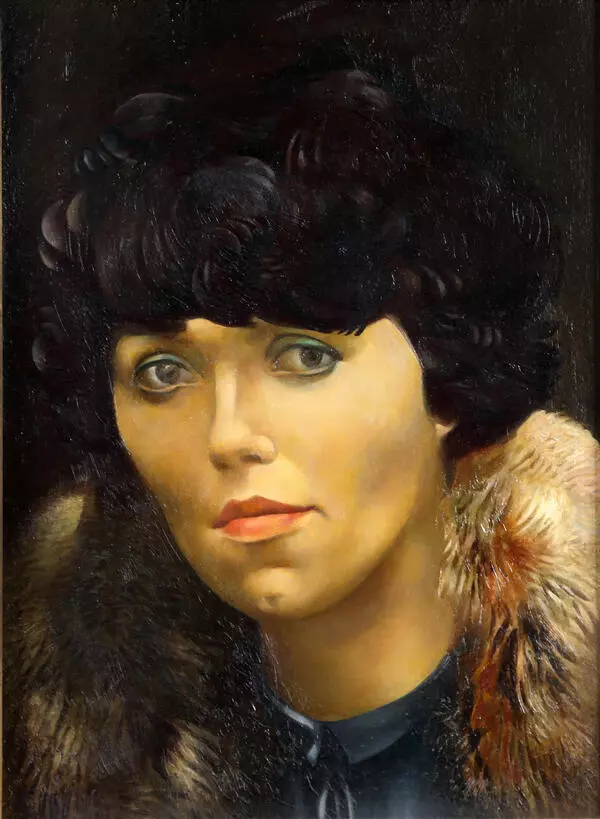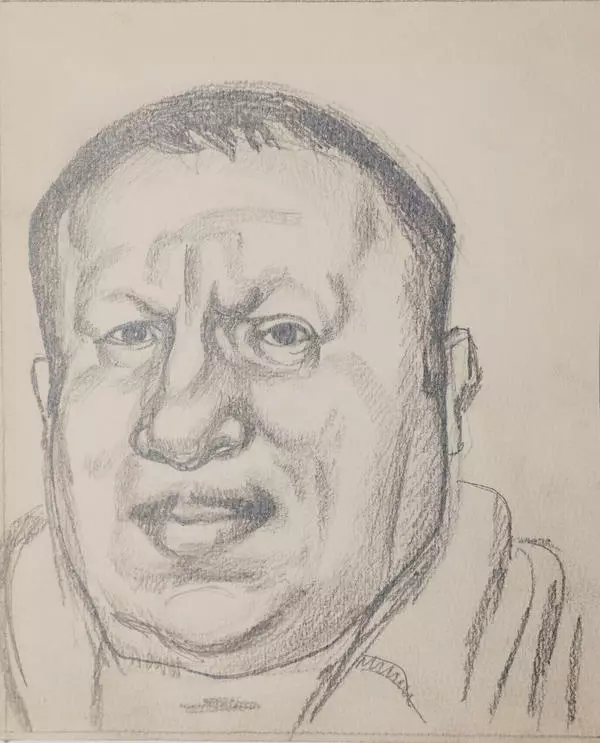The painting ‘1918’ is one of the most prominent works of the Ural region of the 1960s. It sparked arguments as soon as it was conceived. The reason is that this painting showed Lenin not as a humble and wise guide, but rather as a powerful and maybe even cruel ruler. The painters broke from the tradition of depicting Lenin which had been established in the USSR, so their contemporaries regarded the painting as a certain challenge. Young people laid flowers to it, while the authorities were looking for ways to forbid it altogether.
It is important that, despite the unconventional scene they chose, Brusilovsky and Mosin used the traditional imagery. In the 1960s, every element of the composition was instantly recognized: the ‘vozhd’ (the Communist leader), his allies, soldiers in budenovkas (broadcloth helmets), the Red Square, and revolutionary flags. An art expert Yevgeny Alexeev wrote that the painters used the imagery with no intention of changing its historic meaning,
It is important that, despite the unconventional scene they chose, Brusilovsky and Mosin used the traditional imagery. In the 1960s, every element of the composition was instantly recognized: the ‘vozhd’ (the Communist leader), his allies, soldiers in budenovkas (broadcloth helmets), the Red Square, and revolutionary flags. An art expert Yevgeny Alexeev wrote that the painters used the imagery with no intention of changing its historic meaning,
